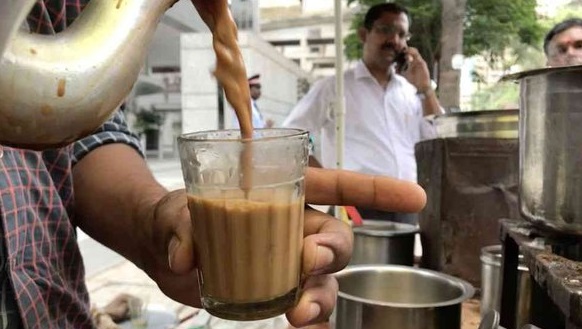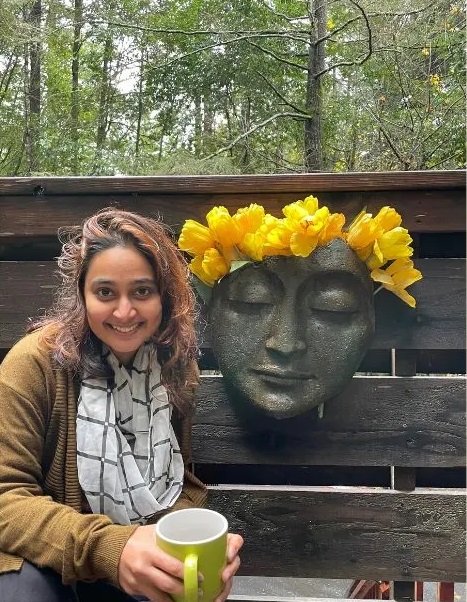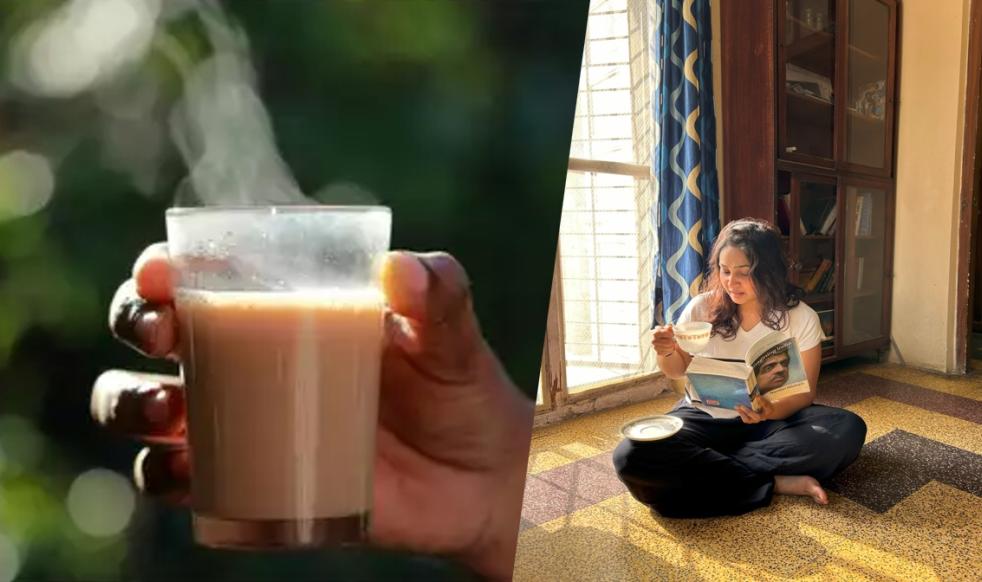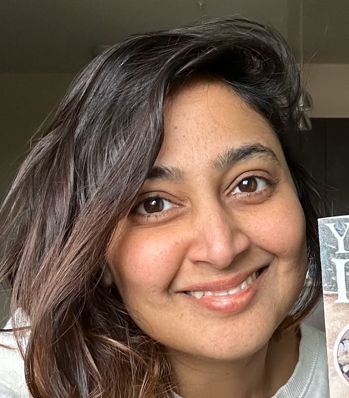Does such a thing as a perfect cup of chai even exist outside our imagination?
As I write this piece, I have a steaming cup of chai within reach. Sadly, it’s smack in the middle of average and awful.
I made it myself. It is better than chai tea latte but let’s not go there.
I’ve been trying to make a decent cup of tea for years. It has been more elusive than true love even. And the task only got harder since I moved from Mumbai to California. I suspect it has something to do with the paradox of choice – in the U.S., there are one too many types of milk to choose from and I haven’t found the one best suited for chai yet.
Not that the tea in Mumbai was perfect – ‘hawaldar chai’, as I like to call the tea served by the friendly neighborhood tapri, is too sweet, the one made by my house help is too strong, at Udipi restaurants it’s too milky… it’s never just right.

Anyway, this is a piece about emotional recipes, not the ones that involve brewing instructions.
My love story with this bittersweet buff brown beverage began in childhood. Maharashtrians take their tea very seriously. If you speak Marathi, you’ll know the line ‘apan chahaa gheuya’, as opposed to ‘apan chahaa piuya.’ To translate, Maharashtrians don’t simply drink their tea… they become one with it. We consume our chahaa with an unparalleled passion.
Long before I tasted tea, I slurped stories about it. By the time I was 10, I understood that if you’re Indian, chai is so much more than just a beverage – it’s liquid culture that has percolated into transgenerational memory.
Tea is part coming of age (“no you’re too young to drink tea, finish your milk!”), part social lubricant (“chai pe charcha”), part vice (“chai-sutta”), part arranged marriage enabler (“shaayad meri shaadi ka khayal dil mein aaya hai…”).
My most memorable tea tale is far away in time, but very close, genetically. It’s not a first-person account, but someone else’s experience I grew up listening to: On the cusp of 1947-48, my Amamma (Telugu for mother’s mother) traversed the road between Rajahmundry in Andhra Pradesh and Varanasi in Uttar Pradesh, when she went to pursue a master’s degree (M.Sc.) in Physics from Banaras Hindu University. She moved all the way from the banks of the Godavari to the ghats of the Ganga for higher education – a long journey back then. At the time, Dr. Sarvepalli Radhakrishnan, whose birthday (5th September) is celebrated as Teacher’s Day in India, was vice chancellor of the institution.
What’s tea got to do with this? “When I reached Banaras railway station,” she recalled frequently, “I heard vendors wooing travelers with steaming cups of tea… they were selling not ‘adrak chai’ and ‘elaichi chai’, but ‘Hindu chai’ and ‘Muslim chai’.” Such were the times in the months that followed the partition of India.
I was reminded of my grandmother’s story in 2014, 66 years after she gingerly drank a cup of Hindu chai at that station, when Hindustan Unilever created an advertisement for Brooke Bond Red Label, hinged on religious harmony; in it, the fragrance of fresh tea helps a visibly Hindu man overcome his deep-seated hostility towards a burkha-clad neighbor. The same old leaf, a totally new flavor.
Despite my complicated relationship with it, tea remains my favorite hot beverage. Chai time is when I am forced to slow down. I don’t mean that in a philosophical way; I mean literally slow down because if I don’t, it will spill. It’s the time of the day when one is compelled to stop typing, texting, gesturing, and moving around because one is dealing with dangerously hot liquid.
At some level, I think I am guilty of fetishizing the perfect cup of chai. My infatuation with wine is similar. I think I’ve romanticized the abstract concept of wine. Its ability to instantly transport me to Europe and the way it looks in the glass — sometimes coral and fizzy, but mostly red and sophisticated — is more seductive than the physiology of actually drinking and metabolizing it.

Coming back to tea, there’s a proverb of yore that feeds this sentiment. In 2007, Penguin published a book called Three Cups of Tea by Greg Mortenson and David Oliver Relin. The title is based on a Pakistani proverb that says – you’re strangers when you share the first cup of tea with someone, friends by the time you get to the second, and family when you have the third. The saying probably didn’t originate in an Indian context, and the book is about a great deal more than just tea, but it tugs at a tightly strung chord, doesn’t it?
Tea is also lauded as the biggest social leveler in India. Besides being at the heart of Prime Minister Modi’s fabled humble beginnings as a tea seller, it’s the only refresher that’s enjoyed in every Indian state, across all socio-economic strata. The preparation style differs, though. From kesar to saunf, from dalchini to lavang, from lime to whiskey, from jaggery to pudina, from lemongrass to black pepper — the ingredients that go into a cup of Indian tea are varied and wonderful.
Like so many desi immigrants in the United States, I’ve started nursing fantasies about going back home someday. I’ve also started imagining what the perfect, familiar cup of tea will taste like once I do.
But just like the wisps of steam that have long since left the now cold cup of chai in front of me, I know it exists only in my dreams.
This article “O Where Art Thou, My Perfect Cup Of Chai?” was first published on India Currents.
Ashwini Gangal is a fiction writer based in San Francisco, who has published stories and poems in literary magazines in the UK and Croatia.

 215 Views
215 Views 0 comments
0 comments
Comments